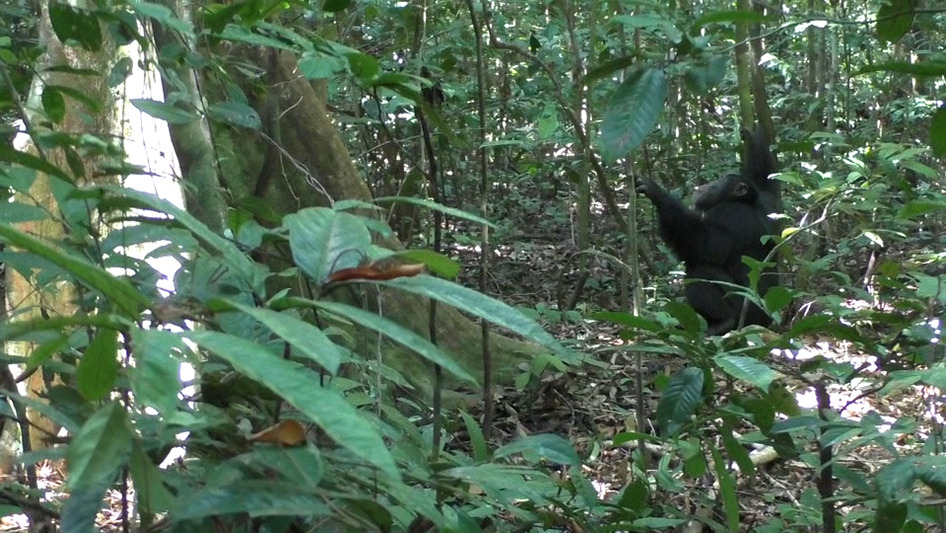Media release
From:
Peer-reviewed Observational study Animals/Primates
Chimpanzee groups drum with distinct rhythms
New research from a team of cognitive scientists and evolutionary biologists finds that chimpanzees drum rhythmically, using regular spacing between drum hits. Their results, publishing in the Cell Press journal Current Biology on May 9, show that eastern and western chimpanzees—two distinct subspecies—drum with distinguishable rhythms. The researchers say these findings suggest that the building blocks of human musicality arose in a common ancestor of chimpanzees and humans.
“Based on our previous work, we expected that western chimpanzees would use more hits and drum more quickly than eastern chimpanzees,” says lead author Vesta Eleuteri (@EleuteriVesta) of the University of Vienna, Austria. “But we didn't expect to see such clear differences in rhythm or to find that their drumming rhythms shared such clear similarities with human music.”
Earlier studies showed that chimpanzees produce low-frequency sounds by drumming on buttress roots—large, wide roots that grow above the soil. The researchers suggest that the chimps use these percussive patterns to send information over both long and short distances.
“Our previous study showed that each chimpanzee has their own unique drumming style and that drumming helps to keep others in their group updated about where they are and what they’re doing—a sort of way to check in across the rainforest,” Eleuteri says. “What we didn’t know was whether chimpanzees living in different groups have different drumming styles and whether their drumming is rhythmic, like in human music.”
To find out, Eleuteri and her team, including senior authors Catherine Hobaiter of the University of St. Andrews in the UK and Andrea Ravignani of Sapienza University in Rome, teamed up with other chimpanzee researchers to study 371 drumming bouts in 11 chimpanzee communities, including six populations and two subspecies.
After analyzing the drum patterns, they found that chimpanzees drum with rhythm and that the timing of their hits is non-random and often evenly spaced. Eastern and western subspecies also exhibited different drumming patterns; western chimpanzees used evenly spaced hits while eastern chimpanzees more often alternated between hits at shorter and longer time intervals. They also found that western chimpanzees hit their “drums” more, using a faster tempo, and integrated their drumming earlier in their pant-hoot vocalizations.
“Making music is a fundamental part of what it means to be human—but we don’t know for how long we have been making music,” says Hobaiter. “Showing that chimpanzees share some of the fundamental properties of human musical rhythm in their drumming is a really exciting step in understanding when and how we evolved this skill. Our findings suggest that our ability to drum rhythmically may have existed long before we were human."
Multimedia




 International
International



